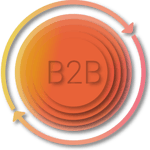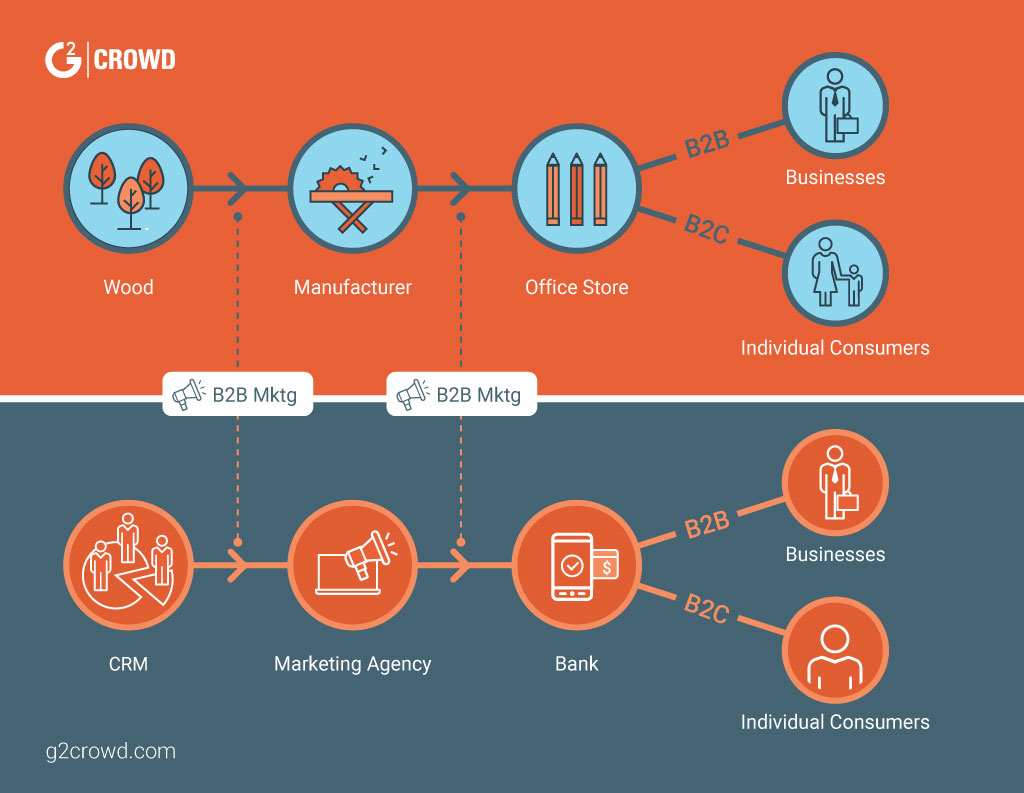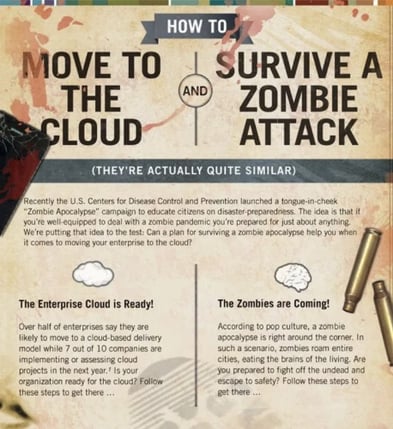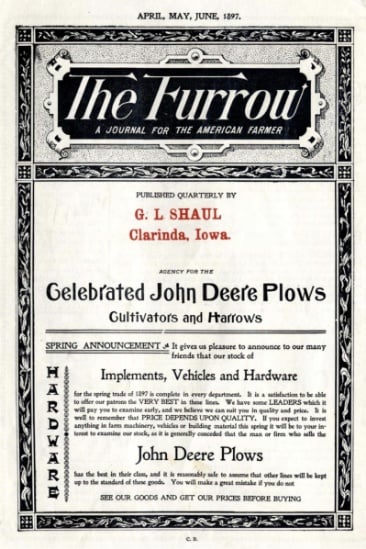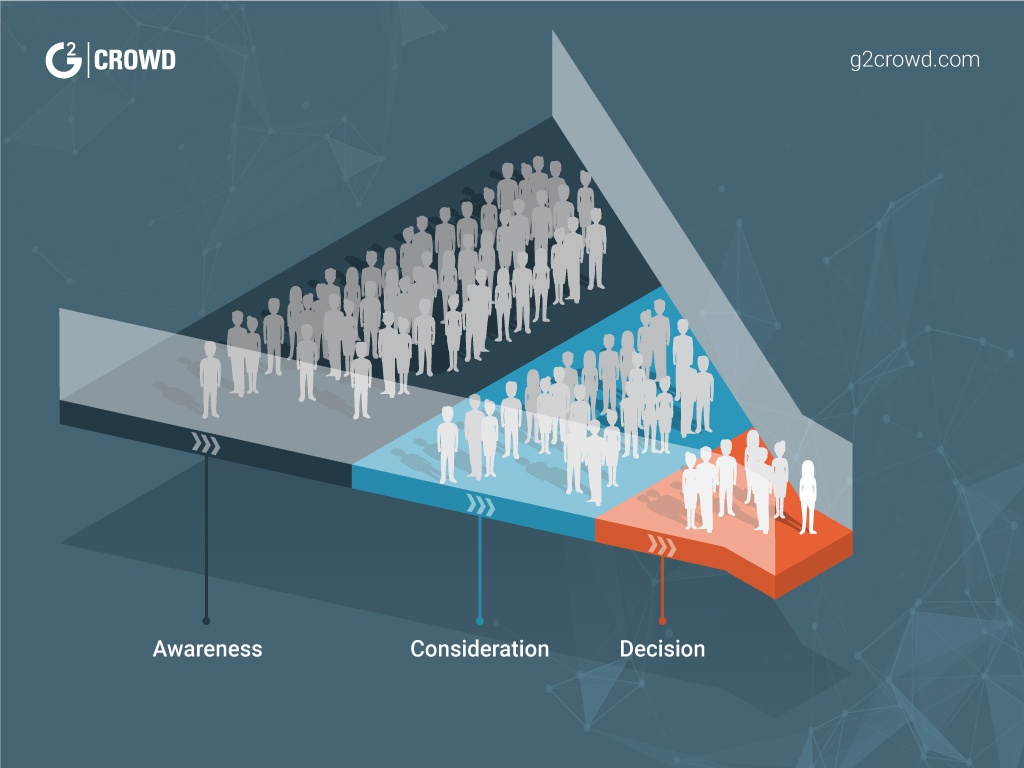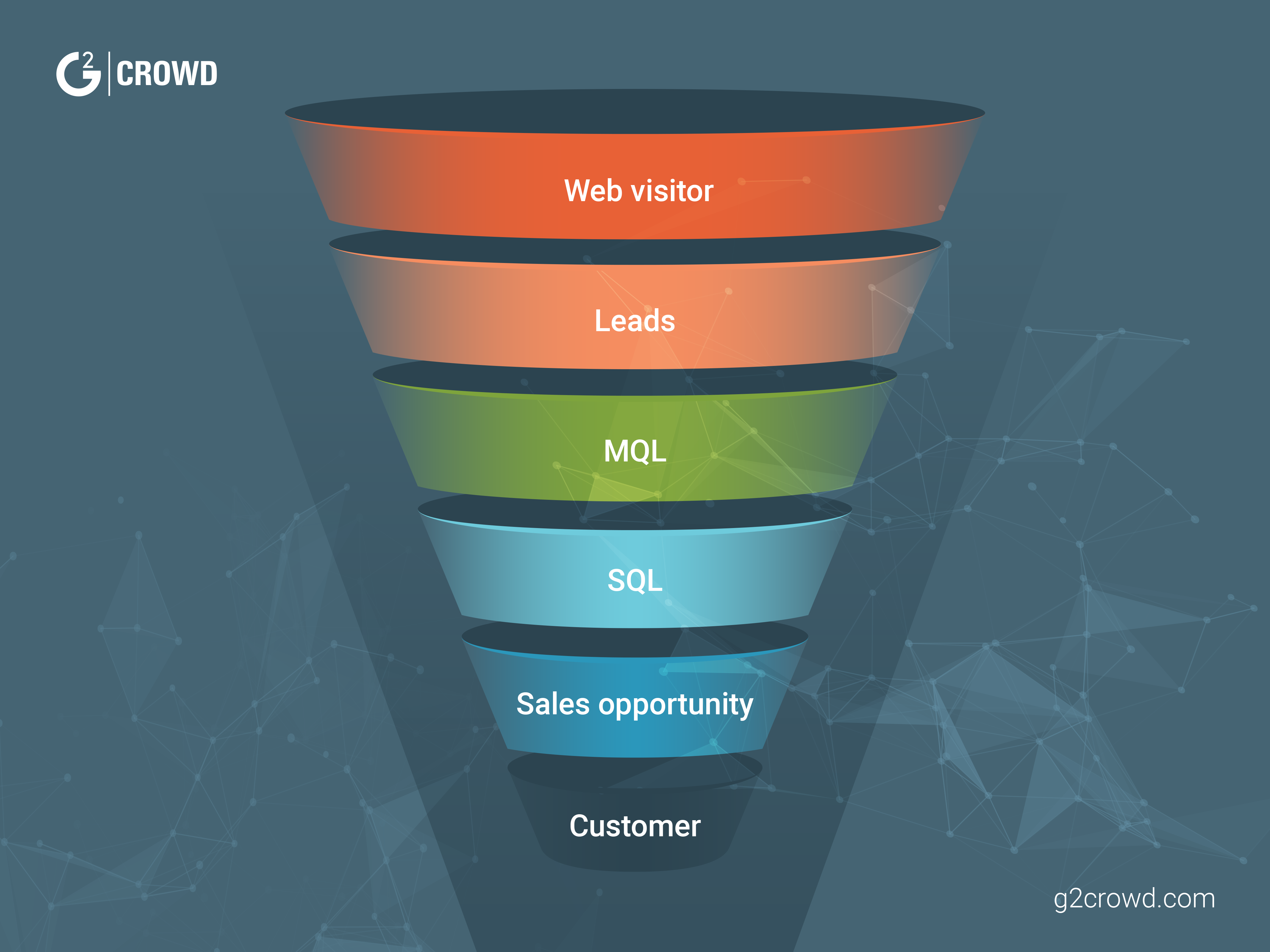Once leads have reached a minimum point value, they become an MQL. Traditionally, an MQL was someone who responded to an outbound marketing communication channel. But now, in a time where the average B2B buyer is 57 percent of the way through a purchase decision before even talking to a sales rep, it's a bit more complicated.
MQL criteria and lead scoring vary based on the B2B company.Let’s look at one example: Say you're an enterprise software company. Working together, sales and marketing management have decided leads need a minimum of 25 points to become an MQL.
Two people, Rob and Maria, download your guide about network security in exchange for filling out a form, where they each provided their name, company, company size, title and email address. Each of them receives five points. But only Maria reads the guide and clicks on a link within, which leads her back to your website. Once there, she downloads another piece of content, giving her another five points. Maria is a more valuable lead because she has shown more interest in your company.
Now let’s factor demographics into the equation. Rob’s company is a small business with only six employees. Given the high price tag of your product, he loses three points, now down to two. Maria, on the other hand, works at an enterprise company with more than 1,000 employees, and she is a director of her company. She receives three points for each of those items, bringing her to 16.
In the next three months, Mary receives multiple emails from your company. She opens six emails and clicks the links on two of them, giving her another 10 points, for a total of 26 points. Congratulations – Mary is officially an MQL!
To summarize MQLs and lead scoring, the most common activities that can factor into lead scoring and qualify someone as an MQL are:
- Key content actions. Interactions with any of your website’s content pieces are great reasons to give a lead points, as is opening emails and clicking on the links within. Consuming in-depth, specialist content about your product may earn extra points.
- Key website actions. If a lead spends a lot of time on a pricing page or returns to it multiple times within a short period, that could mean he or she should be an MQL.
- Demo requests. Having a visitor request a demo or more information is probably the most obvious sign that a lead is marketing-qualified. This is definitely significant, and therefore worth more more points than downloading an eBook.
- Face-to-face interactions. If you have an event you are hosting or sponsoring, and someone interacts with you there, this is a great reason to assign them points.
- Demographics. As discussed, for many B2B companies points are often given for a person’s title and company size, as well as other potential factors such as their industry and location.
MQL scoring is flexible. The allocation of points can change over time as marketers optimize their strategies and learn more about what makes their leads and customers tick. It’s important for marketing and sales work together on an ongoing basis. Lead scoring, lead quality and MQL conversions should be re-evaluated periodically as a joint effort between both teams. This ensures the quality of leads that best suits your business. At some companies, the sales team may prefer a higher number of MQLs with a lower threshold. Other businesses may prefer fewer leads that are all high quality.
Once a lead has crossed the line to become an MQL, it’s time for the next step – an SQL.
